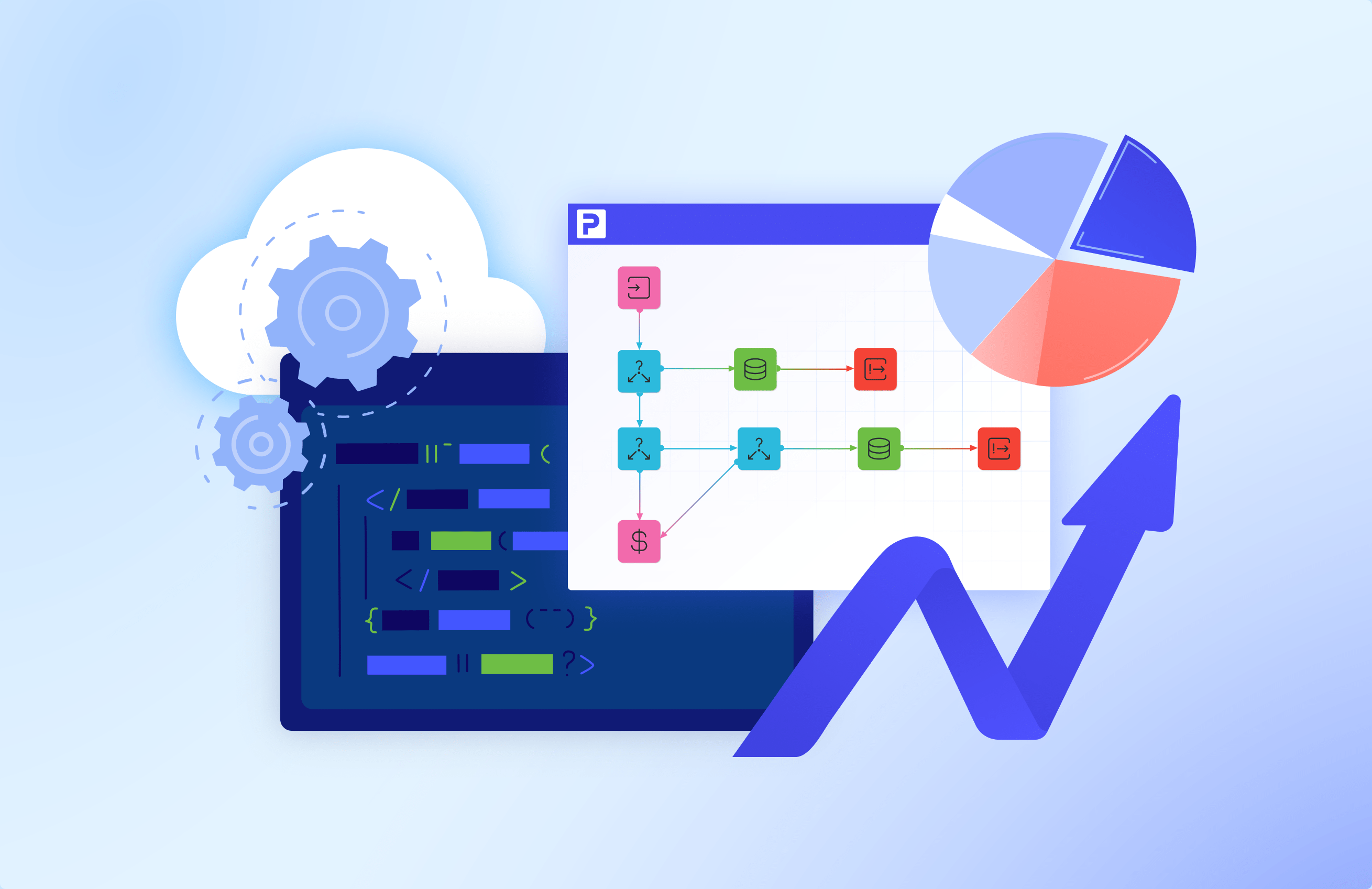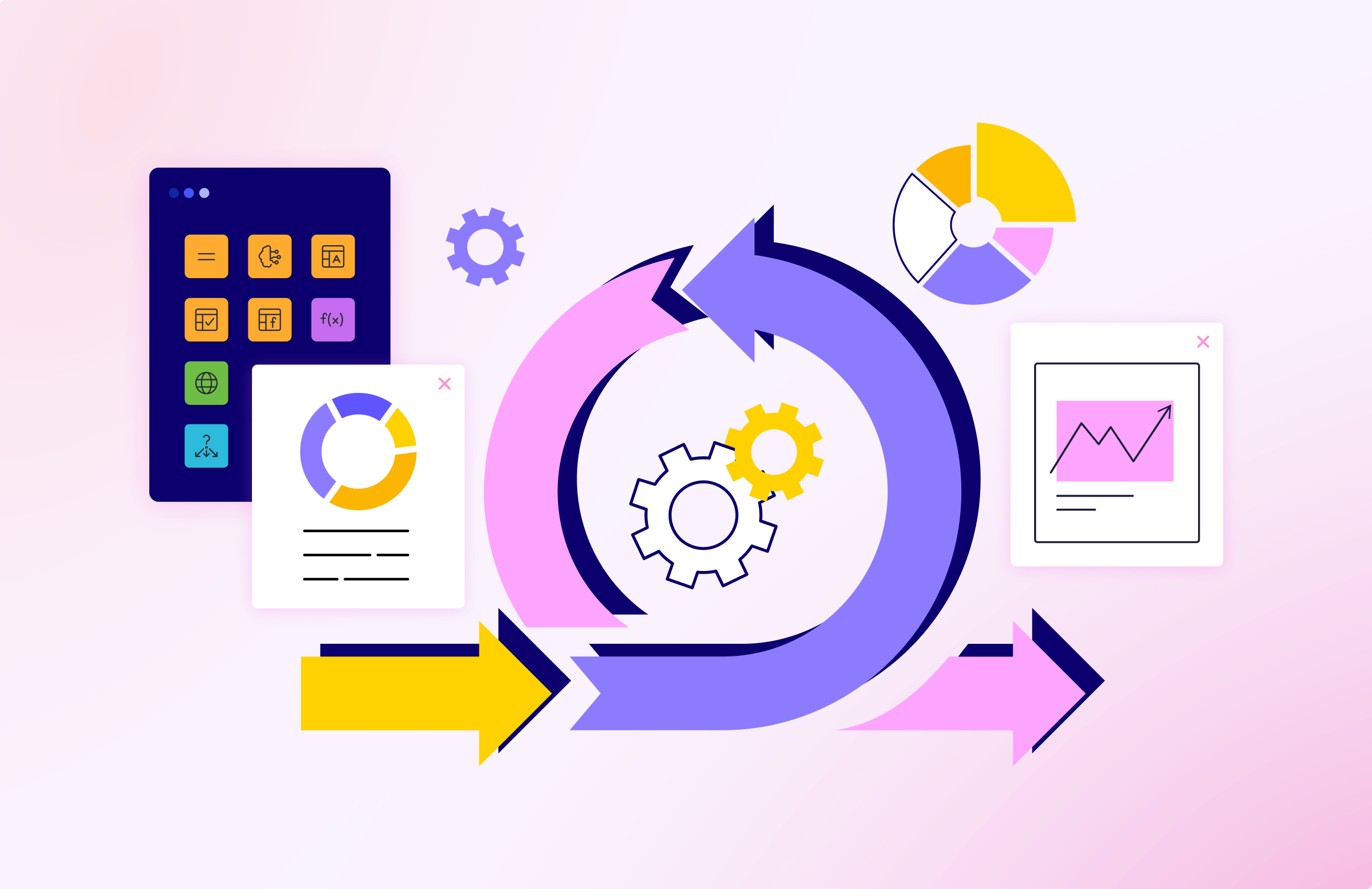The role of low-code platforms in creating personalized banking experiences
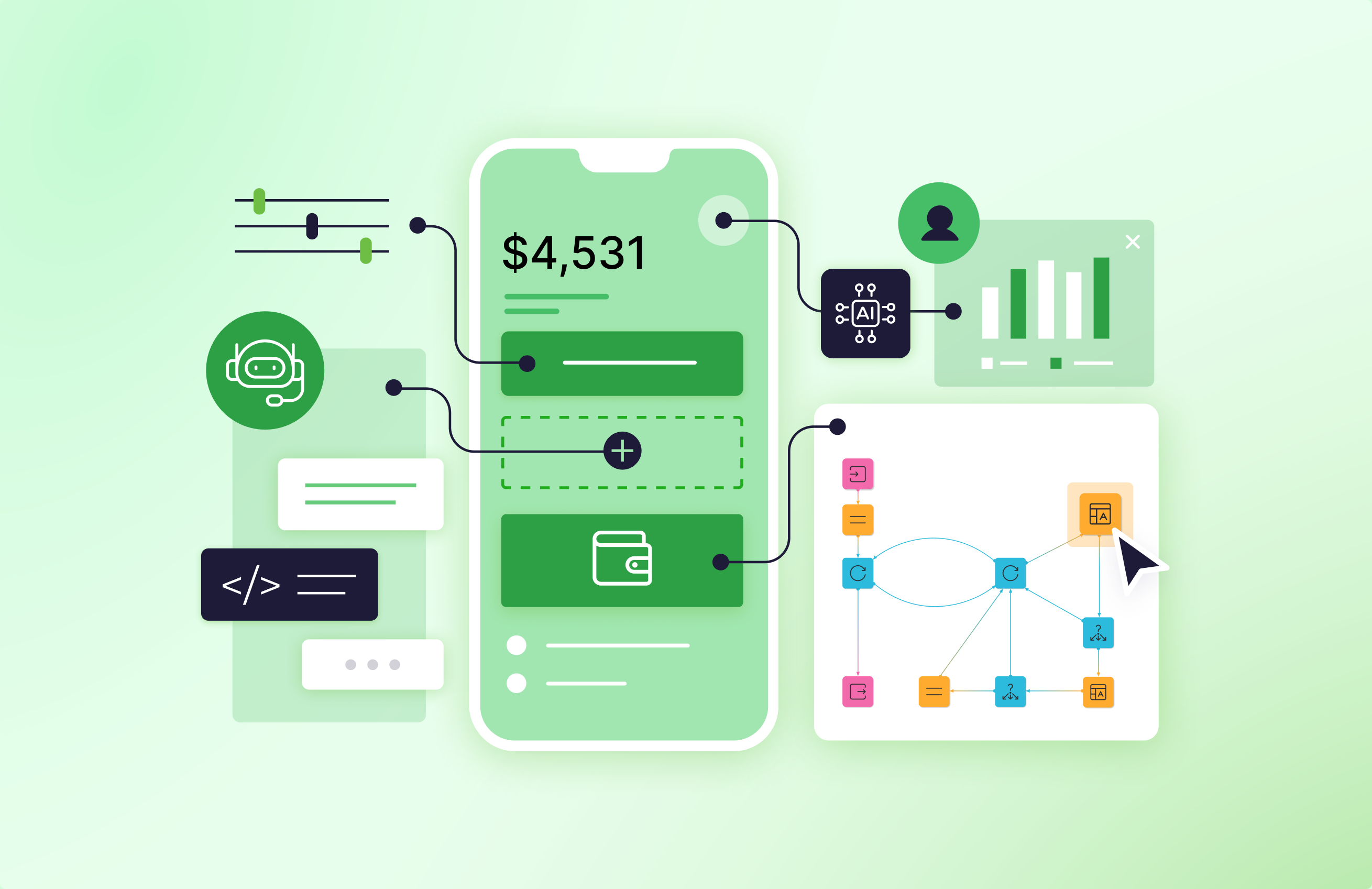

The success of any business depends on its relationships with customers. That goes doubly for banks who not only need to inspire trust and deliver the best service to their clients but also need to compete against neo-bank competitors.
Thanks to the technological advancement of past decades, banks can process and get more information about their customers’ needs and expectations, empowering them to make decisions and deliver better service.
At the same time, creating effective banking digital systems and applications is often a long and costly process, with technological upgrades for banking systems, client-side applications, and more convenient digital services taking anything from months to years.
But times have changed and software development made it an evolutionary step towards more agile low-code solutions. The low-code approach opened wider possibilities for creating effective solutions for banks and their clients. This approach allows us to implement new tools faster and build apps that produce more personalized experiences for customers. In this article, you will learn more about the capabilities of low-code platforms for banking service personalization and how these solutions work.
What are low-code platforms?
A low-code platform is a software tool for fast software development of any complexity. In contrast to no-code platforms, low-code allows users to code manually for custom features and integrations.
Low code follows the robust software development approach. Such platforms allow users to build software several times faster than with traditional development methods. Low-code facilitates the development process with pre-made components and includes an array of productivity tools for custom development.
The intuitive low-code platforms’ interfaces open the software development for citizen developers. With a short platform-specific introduction, any domain worker can start building and managing an app using the low-code approach. At the same time, custom development on low-code platforms requires professionals to step in. The level of low-code developers’ expertise can be lower due to the wide arrangement of tools that enhance the process.
ALT: Low-code platform interface
How low-code platforms work?
Let’s find out what exact features make the low-code approach an effective and reliable way of creating banking solutions for personalization.
Visual development flow
Low-code platforms have visual development interfaces where users can drag and drop components and make them work together with graphic connectors. The components for certain types of applications are ready-made so the users only need the right set and to set the parameters. Visual development in low-code platforms is pretty much like a code constructor that is intuitive and easy to work with.
Developer productivity tools
When it comes to custom development, low-code platforms assist professional developers in many ways. First, they have convenient IDEs (Integrated Development Environments) that improve the development team’s collaboration with project managers. The IDEs allow developers to merge code consistently and employ a reversible app creation history. Then, low-code platforms usually include AI assistants that can guide developers during the process and suggest the code parts.
Embedded testing and debugging tools
Low-code platforms have testing and debugging tools that facilitate QA processes. The platforms are able to check both visual and custom parts of solutions you build on them to find any errors. As soon as a problem arises, the low-code platform can alert users of it and link the part where it has occurred. In fact, the low-code platforms won’t approve software for deployment if there is any problem in the visual development flow.
Seamless Integration
Low-code banking applications can be integrated with social media, web portals, and a banking client base to provide better personalization. The low-code apps get connected to the 3rd parties through different types of APIs depending on the source. The banking app integration process takes a few minutes.
Quick deployment
Cloud-based low-code platforms allow for the deployment of applications instantly in the cloud environments. This means you don’t need to spend weeks on pre-deployment preparations and start getting value from banking personalization technologies right away.
Banking customer engagement model
Banks employ various technologies to ensure seamless interactions with customers. Among the software and tools they use to connect with clients are:
- Mobile applications and web portals. The face of a bank in a digital world. Customers can create their profiles, activate bank accounts, and get lending services via these applications.
- AI-powered chatbots. An integral part of banking mobile and applications. Smart digital helpers that answer the FAQ and redirect clients to corresponding specialists, if needed.
- Omni-channel support. Apart from chatbots on a website or mobile application, banks connect with their customers on social media, via phone calls, and e-mail. Establishing integrated support infrastructure requires thorough channels’ integration and systems.
The role low-code platforms play in banking service personalization
Low-code platforms are about speed, flexibility, ease of use, and security. These traits make them a perfect fit for customer service tool creation. Here are the features low-code provides to enhance banking service personalization.
AI-powered apps
Low-code platforms are embedded with AI that can facilitate customer service and data analytics. AI-enabled low-code platforms for customer service personalization allow banks to build chatbots, get insights into customer preferences, and improve client account security.
Effective customer support
Low-code customer portals allow users to find the answers to their questions effectively. Instead of waiting in a long phone line or looking on the Internet, they can find any data they require by searching on a low-code info portal. Also, banking service personalization low-code platforms can provide tools for personalized suggestions and advice for banking mobile/web app users.
Enabled customer agents
Low-code platforms for customer management tools development allow domain experts to orchestrate digital processes themselves. Increased digital competence of the bank’s employees is reached by the pre-made components and an intuitive interface. Such low-code platforms also increase the maintenance speed and reduce IT support in the customer service department.
Improved KYC (Know Your Customer)
AI-powered analytics along with social media integrations of low-code platforms provide more detailed data on each customer. With low-code tools for baking client profiling, users can score the prospects, define the most demanded services, and advertise to the target audience.
Fast way to comply with regulations
With low-code platforms, bankers can create solutions for clients faster according to the new regulations. In addition, the ready-made low-code banking systems are easy to adjust for the changing service regulations.
Flexible applications
Using low-code platforms banks are able to brand their applications, forms, and tools. Also, it comes in handy when a bank needs to adjust the functionalities of the applications in response to customer feedback.
ProcessMIX for customer service tools development
If you are looking for a low-code platform capable of producing any banking service personalization solution, consider ProcessMIX. Get a free ProcessMIX Demo version and make a step toward your customers.
ProcessMIX is a low-code platform for back-end development that was created with banking software development needs in mind. ProcessMIX has pre-made components to build a vast array of software for banking service personalizations including chatbots, rule-based automation tools, client scoring algorithms, AI-powered data analytics tools, and many others.
{Embed video: ProcessMix Application}
With ProcessMIX, you can build applications of any complexity in days and integrate them with your existing banking infrastructure in minutes. The platform facilitates personalization solution development on all levels making both visual and custom creation easier. Explore more on ProcessMIX functionalities in our user guide.
 Visual Development
Visual Development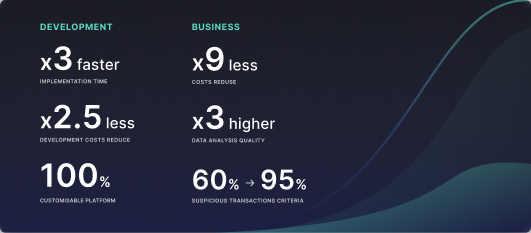 Assignment of risk level and customer category within KYC processes at customer onboarding
Assignment of risk level and customer category within KYC processes at customer onboarding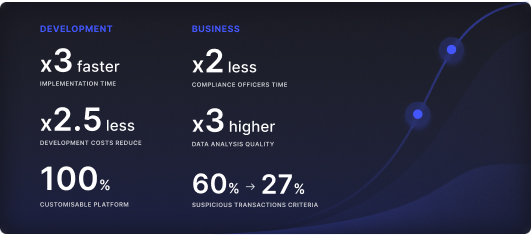 Cross-Sell Offer Calculation for the 12M Client Base
Cross-Sell Offer Calculation for the 12M Client Base
